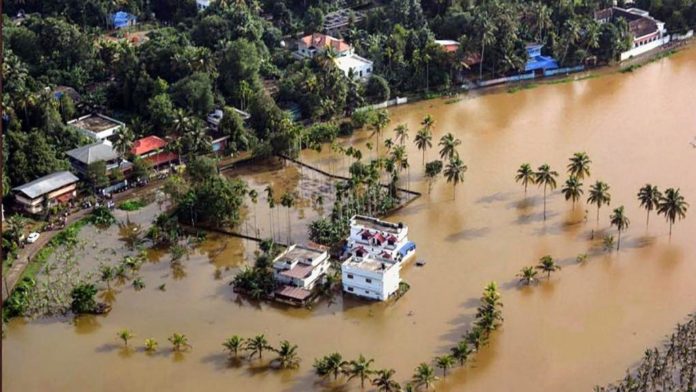Climate change is a long-term process that describes modifications to the world’s weather patterns over a period of decades to centuries. The most significant source of climate change is the rise in greenhouse gas emissions into the atmosphere brought on by human activities like the burning of fossil fuels and deforestation. Long-term modifications to the Earth’s weather and climatic patterns are referred to as “climate change.” Variations in the mean temperature, precipitation, wind speed, and other climate variables are involved.
A changing climate refers to alterations in Earth’s long-term weather patterns, such as rising global temperatures, shifting rainfall patterns, increasing the severity of extreme weather events, and other climatic conditions that can continue for centuries or millennia. One of the biggest problems now affecting mankind and the environment is climate change. Among the signs of a changing climate are the following:
- Global Warming: The effect of global warming is one of the most obvious effects of the changing environment. The term “global warming” describes the recent rise in the Earth’s surface’s average temperature. Global warming is mostly caused by human actions, such as the emission of greenhouse gases into the atmosphere from the burning of fossil fuels.
- Modifications in Rainfall Patterns: Rainfall patterns are also impacted by climate change. Extreme increases in rainfall may occur in some locations, while severe drought may occur in others. This has an effect on agriculture, ecological sustainability, and water availability.
- An increase in extreme weather: A changing climate is resulting in extreme weather that is both more frequent and more severe. Stronger tropical storms, damaging floods, massive forest fires, and hazardous heat waves are a few of these.
- Sea Level Rise: As a result of global warming, land-based glaciers are melting and sea temperatures are rising. As a result, sea levels rise, putting coastal cities at risk of floods, erosion, and other problems.
- Threats to Biodiversity: Global ecosystems are being impacted by climate change, which has the potential to annihilate species and disrupt natural food chains.
- Threats to human health: Increased exposure to extreme heat can have a negative impact on one’s health and raise the possibility of contracting illnesses like heat exhaustion and mosquito-borne disorders.
- Social and Economic Change: As a result of a changing climate, issues such as food security, migration, and conflicts over diminishing natural resources may arise.
Changes in precipitation patterns, storm strength, and other climate phenomena are all impacted by climate change. Increased greenhouse gas emissions, such as carbon dioxide, brought on by human activities like the burning of fossil fuels are closely related to climate change.
Rising global temperatures, melting polar ice, rising sea levels, and significant disruptions to ecosystems and human life are all effects of climate change. Extreme occurrences like floods, droughts, and more powerful storms can all be brought on by climate change. Important details of climate change include:
- Human activities: increased emissions of greenhouse gases including carbon dioxide (CO2) from burning fossil fuels, methane from agriculture, and harm to the ozone layer from some chemicals are the main causes of climate change. Natural: shifts in the solar cycle, volcanic eruptions, or variations in the Earth’s orbit can all lead to natural climate shifts.
- Greenhouse Effect: Greenhouse gases like CO2 and methane permit solar radiation to enter the atmosphere but restrict the heat radiation that is emitted, resulting in an increase in global temperatures.
- Consequences of Climate Change: An increase in the average global temperature, which leads to more severe weather and a disruption of the climate.
- Sea level rise: Puts islands and coastal communities in grave danger.
- Extreme weather patterns: Increasingly frequent and severe floods, droughts, storms, and forest fires are among examples.
- Ecosystem Changes: Climate change has an impact on ecosystems, causing species to migrate, food chains to break up, and plant growth seasons to vary.
- Reduction of emissions: Increasing energy efficiency, lowering the use of fossil fuels, and transitioning to renewable energy sources are all part of efforts to lower greenhouse gas emissions.
- Adaptation: Creating plans and tools to combat the effects of climate change that have already materialized.
- International agreements: The Paris Agreement, for example, aims to coordinate international efforts to combat climate change.
It’s critical to realize that climate change is a complicated and continuing phenomena. There have been national and international initiatives to cut greenhouse gas emissions, lessen the effects of climate change, and adapt to the changes that are already happening. Coordinating international action against climate change is a goal of agreements like the Paris Agreement. Collaboration between nations, as well as awareness, education, and individual action, are essential to combating climate change and preserving the planet’s future.
When talking about climate change, it’s important to remember that the two ideas are interconnected and tightly intertwined. The increase in global temperatures brought on by global warming altering numerous climate patterns is one of the effects of global warming on climate change. This causes climate change, which includes phenomena like increasing sea levels owing to polar ice melting, an increase in average temperature, altered rainfall patterns, and more frequent extreme weather events.
These are all aspects of the climate change brought on by human-caused global warming. A number of initiatives focused at lowering greenhouse gas emissions, protecting the environment, and boosting climate change resilience are part of the solutions to the global warming problem. The collective efforts of various parties, including governments, businesses, civic society, and individuals, are necessary to find solutions to global warming.
There must be strong global commitment and tangible action to reduce greenhouse gas emissions and maintain a healthy natural environment in order to lessen the effects of global warming and prevent harsher outcomes.
Similar to global climate change solutions, local climate change solutions are actions and initiatives undertaken at the level of a specific community, region, or city to cut greenhouse gas emissions, boost climate change resilience, and mitigate any potential repercussions. Because climate change is a global issue that can be solved with just local-level activity, local solutions play a crucial role in global efforts to address it. Solutions to local climate change examples:
1. Renewable Energy: Using renewable energy sources to meet local energy needs, such as solar panels, wind turbines, and bioenergy, which can lower carbon emissions from fossil fuel power plants.
2. Sustainable Transportation: Promote the use of electric automobiles, bicycles, and public transportation while also creating bike lanes and effective public transportation systems.
3. Sustainable Agriculture: Using sustainable agricultural methods to lessen greenhouse gas emissions from the agricultural sector, such as organic farming, the use of green manure, and effective irrigation.
4. Sustainable Waste Management: To reduce methane gas emissions from waste disposal, minimize trash, recycle garbage, and manage waste appropriately.
5. Forest Conservation: Protecting local ecosystems and forests to stop carbon emissions from logged forests and lessen deforestation.
6. Education and Awareness: Increase public knowledge of climate change and the steps that can be taken to lessen its effects by educating people about it.
7. Energy Efficiency Upgrades: Perform energy audits and raise the energy efficiency of private, commercial, and public buildings.
8. Community Collaboration: Communities, businesses, local governments, and non-profit organizations collaborate to create strategies and initiatives that lower greenhouse gas emissions and boost climate change resilience.
Local climate change solutions refer to the actions and initiatives undertaken at the level of a particular community, region, or city to reduce greenhouse gas emissions, boost climate change resilience, and address the potential impacts of climate change in that area.
Given that climate change is a global issue that can be resolved with just local-level activity, local solutions are a crucial component of global efforts to address it, because community-level activity can result in more quick and noticeable change, local responses to climate change are essential.
These initiatives may serve as a catalyst for regional and international action. Action that combines lowering emissions, protecting the environment, and boosting community resilience to climate change is required at the local level if climate change is to be effectively addressed.
By: Aisatur Rofiah
Write and Win: Participate in Creative writing Contest & International Essay Contest and win fabulous prizes.














